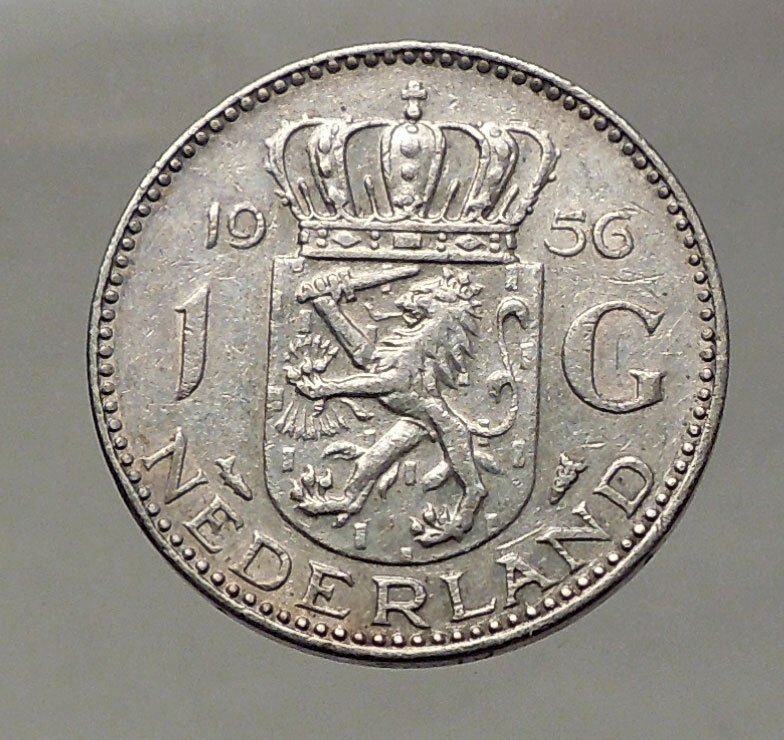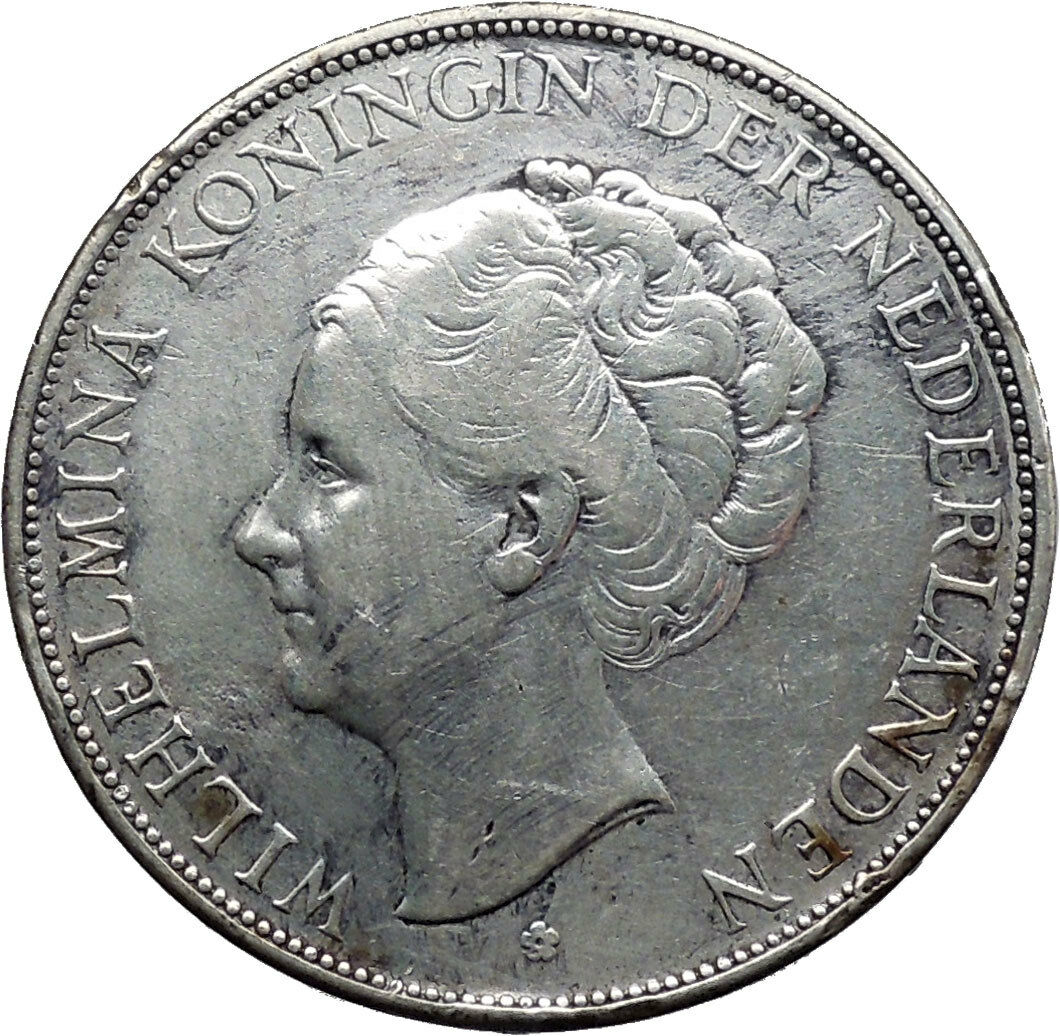|
Netherlands under Beatrix – Queen: 30 April 1980 – 30 April 2013
BE-NE-LUX Treaty 50th Anniversary
1994 Proof Silver 10 Gulden 38mm (24.88 grams) 0.925 Silver (0.7435 oz. ASW)
Reference: KM# 216 | Engraver: W. Vis
Certification: NGC PF 69 ULTRA CAMEO 2854813-008
BE NE LUX 1944-1994 10 G, From left to right the Belgian, Dutch and Luxembourg parliaments above the respective seals sealing the treaty.
BEATRIX KONINGIN DER NEDERLANDEN, Beatrix.
Edge Lettering:
GOD ZIJ MET ONS
You are bidding on the exact item pictured, provided with a Certificate of Authenticity and Lifetime Guarantee of Authenticity.
 The Benelux Union (Dutch: Benelux Unie; French: Union Benelux; Luxembourgish: Benelux-Unioun), also known as simply Benelux, is a politico-economic union and formal international intergovernmental cooperation of three neighbouring states in western Europe: Belgium, the Netherlands, and Luxembourg. The name Benelux is a portmanteau formed from joining the first few letters of each country’s name—Belgium, Netherlands, Luxembourg—and was first used to name the customs agreement that initiated the union (signed in 1944). It is now used more generally to refer to the geographic, economic, and cultural grouping of the three countries. The Benelux Union (Dutch: Benelux Unie; French: Union Benelux; Luxembourgish: Benelux-Unioun), also known as simply Benelux, is a politico-economic union and formal international intergovernmental cooperation of three neighbouring states in western Europe: Belgium, the Netherlands, and Luxembourg. The name Benelux is a portmanteau formed from joining the first few letters of each country’s name—Belgium, Netherlands, Luxembourg—and was first used to name the customs agreement that initiated the union (signed in 1944). It is now used more generally to refer to the geographic, economic, and cultural grouping of the three countries.
The Benelux is an economically dynamic and densely populated region, with 5.6% of the European population (29.2 million residents) and 7.9% of the joint EU GDP (€36,000/resident) on no more than 1.7% of the whole surface of the EU.
 Some examples of results of Benelux cooperation: automatic level recognition of all diplomas and degrees within the Benelux, a new Benelux Treaty on Police cooperation, common road inspections and a Benelux pilot with digital consignment notes. Some examples of results of Benelux cooperation: automatic level recognition of all diplomas and degrees within the Benelux, a new Benelux Treaty on Police cooperation, common road inspections and a Benelux pilot with digital consignment notes.
The main institutions of the Union are the Committee of Ministers, the Council of the Union, the General Secretariat, the Interparliamentary Consultative Council and the Benelux Court of Justice while the Benelux Office for Intellectual Property cover the same land but are not part of the Benelux Union.
The Benelux General Secretariat is located in Brussels. It is the central platform of the Benelux Union cooperation. It handles the secretariat of the Committee of Ministers, the Council of Benelux Union and the sundry committees and working parties. The General Secretariat provides day-to-day support for the Benelux cooperation on the substantive, procedural, diplomatic and logistical levels. The Secretary-General is Alain de Muyser from Luxembourg and there are two deputies: Deputy Secretary-General Frank Weekers from the Netherlands and Deputy Secretary-General Rudolf Huygelen from Belgium.
The presidency of the Benelux is held in turn by the three countries for a period of one year. Belgium holds the presidency for 2021.
 Beatrix of the Netherlands (Beatrix Wilhelmina Armgard; born 31 January 1938) is a member of the Dutch royal family who reigned as Queen of the Netherlands from 30 April 1980 until her abdication on 30 April 2013. Beatrix of the Netherlands (Beatrix Wilhelmina Armgard; born 31 January 1938) is a member of the Dutch royal family who reigned as Queen of the Netherlands from 30 April 1980 until her abdication on 30 April 2013.
Beatrix is the eldest daughter of Queen Juliana and her husband, Prince Bernhard of Lippe-Biesterfeld. Upon her mother’s accession in 1948, she became heir presumptive. Beatrix attended a public primary school in Canada during World War II, and then finished her primary and secondary education in the Netherlands in the post-war period. In 1961, she received her law degree from Leiden University. In 1966, Beatrix married Claus von Amsberg, a German diplomat, with whom she had three children. When her mother abdicated on 30 April 1980, Beatrix succeeded her as queen.
Beatrix’s reign saw the country’s Caribbean possessions reshaped with Aruba’s secession and becoming its own constituent country within the Kingdom in 1986 as well as the subsequent Antillean Dissolution in 2010, which created the new special municipalities of Bonaire, Sint Eustatius, and Saba, and the two new constituent countries of Curaçao and Sint Maarten.
On Koninginnedag (Queen’s Day), 30 April 2013, Beatrix abdicated in favour of her eldest son, Willem-Alexander, and resumed the title of princess. At the time of her abdication at age 75, Beatrix was the oldest reigning monarch in the country’s history.
 The Kingdom of the Netherlands, commonly known as the Netherlands, is a sovereign state and constitutional monarchy with territory in western Europe and in the Caribbean. The Kingdom of the Netherlands, commonly known as the Netherlands, is a sovereign state and constitutional monarchy with territory in western Europe and in the Caribbean.
 .svg/220px-Kingdom_of_the_Netherlands_(orthographic_projection).svg.png) The four parts of the Kingdom – Aruba, Curaçao, Sint Maarten and the Netherlands – are constituent countries (landen in Dutch) and participate on a basis of equality as partners in the Kingdom. In practice, however, most of the Kingdom affairs are administered by the Netherlands – which comprises roughly 98% of the Kingdom’s land area and population – on behalf of the entire Kingdom. Consequently, the countries of Aruba, Curaçao, and Sint Maarten are dependent on the Netherlands for matters like foreign policy and defence, although they are autonomous to a certain degree with their own parliaments. The four parts of the Kingdom – Aruba, Curaçao, Sint Maarten and the Netherlands – are constituent countries (landen in Dutch) and participate on a basis of equality as partners in the Kingdom. In practice, however, most of the Kingdom affairs are administered by the Netherlands – which comprises roughly 98% of the Kingdom’s land area and population – on behalf of the entire Kingdom. Consequently, the countries of Aruba, Curaçao, and Sint Maarten are dependent on the Netherlands for matters like foreign policy and defence, although they are autonomous to a certain degree with their own parliaments.
The vast majority in land area of the constituent country of the Netherlands (as well as the Kingdom) is located in Europe, with the exception of the Caribbean Netherlands: its three special municipalities (Bonaire, Saba, and Sint Eustatius) that are located in the Caribbean. The constituent countries of Aruba, Curaçao, and Sint Maarten are located in the Caribbean as well.
|








 The Benelux Union (Dutch: Benelux Unie; French: Union Benelux; Luxembourgish: Benelux-Unioun), also known as simply Benelux, is a politico-economic union and formal international intergovernmental cooperation of three neighbouring states in western Europe: Belgium, the Netherlands, and Luxembourg. The name Benelux is a portmanteau formed from joining the first few letters of each country’s name—Belgium, Netherlands, Luxembourg—and was first used to name the customs agreement that initiated the union (signed in 1944). It is now used more generally to refer to the geographic, economic, and cultural grouping of the three countries.
The Benelux Union (Dutch: Benelux Unie; French: Union Benelux; Luxembourgish: Benelux-Unioun), also known as simply Benelux, is a politico-economic union and formal international intergovernmental cooperation of three neighbouring states in western Europe: Belgium, the Netherlands, and Luxembourg. The name Benelux is a portmanteau formed from joining the first few letters of each country’s name—Belgium, Netherlands, Luxembourg—and was first used to name the customs agreement that initiated the union (signed in 1944). It is now used more generally to refer to the geographic, economic, and cultural grouping of the three countries. Some examples of results of Benelux cooperation: automatic level recognition of all diplomas and degrees within the Benelux, a new Benelux Treaty on Police cooperation, common road inspections and a Benelux pilot with digital consignment notes.
Some examples of results of Benelux cooperation: automatic level recognition of all diplomas and degrees within the Benelux, a new Benelux Treaty on Police cooperation, common road inspections and a Benelux pilot with digital consignment notes. Beatrix of the Netherlands (Beatrix Wilhelmina Armgard; born 31 January 1938) is a member of the Dutch royal family who reigned as Queen of the Netherlands from 30 April 1980 until her abdication on 30 April 2013.
Beatrix of the Netherlands (Beatrix Wilhelmina Armgard; born 31 January 1938) is a member of the Dutch royal family who reigned as Queen of the Netherlands from 30 April 1980 until her abdication on 30 April 2013.  The Kingdom of the Netherlands, commonly known as the Netherlands, is a sovereign state and constitutional monarchy with territory in western Europe and in the Caribbean.
The Kingdom of the Netherlands, commonly known as the Netherlands, is a sovereign state and constitutional monarchy with territory in western Europe and in the Caribbean.
.svg/220px-Kingdom_of_the_Netherlands_(orthographic_projection).svg.png) The four parts of the Kingdom – Aruba, Curaçao, Sint Maarten and the Netherlands – are constituent countries (landen in Dutch) and participate on a basis of equality as partners in the Kingdom. In practice, however, most of the Kingdom affairs are administered by the Netherlands – which comprises roughly 98% of the Kingdom’s land area and population – on behalf of the entire Kingdom. Consequently, the countries of Aruba, Curaçao, and Sint Maarten are dependent on the Netherlands for matters like foreign policy and defence, although they are autonomous to a certain degree with their own parliaments.
The four parts of the Kingdom – Aruba, Curaçao, Sint Maarten and the Netherlands – are constituent countries (landen in Dutch) and participate on a basis of equality as partners in the Kingdom. In practice, however, most of the Kingdom affairs are administered by the Netherlands – which comprises roughly 98% of the Kingdom’s land area and population – on behalf of the entire Kingdom. Consequently, the countries of Aruba, Curaçao, and Sint Maarten are dependent on the Netherlands for matters like foreign policy and defence, although they are autonomous to a certain degree with their own parliaments.




